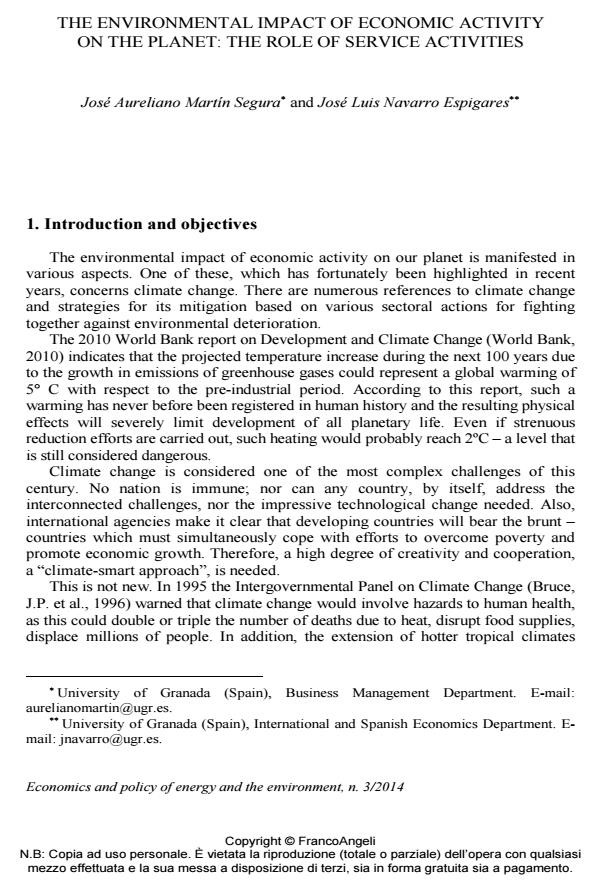The environmental impact of economic activity on the planet: the role of service activities
Titolo Rivista ECONOMICS AND POLICY OF ENERGY AND THE ENVIRONMENT
Autori/Curatori José Aureliano Martìn Segura, Espigares José Luis Navarro
Anno di pubblicazione 2015 Fascicolo 2014/3
Lingua Inglese Numero pagine 26 P. 53-78 Dimensione file 2534 KB
DOI 10.3280/EFE2014-003004
Il DOI è il codice a barre della proprietà intellettuale: per saperne di più
clicca qui
Qui sotto puoi vedere in anteprima la prima pagina di questo articolo.
Se questo articolo ti interessa, lo puoi acquistare (e scaricare in formato pdf) seguendo le facili indicazioni per acquistare il download credit. Acquista Download Credits per scaricare questo Articolo in formato PDF

FrancoAngeli è membro della Publishers International Linking Association, Inc (PILA)associazione indipendente e non profit per facilitare (attraverso i servizi tecnologici implementati da CrossRef.org) l’accesso degli studiosi ai contenuti digitali nelle pubblicazioni professionali e scientifiche
In these times when The United Nations organization is discussing the post-2015 agenda, this paper provides an updated quantification of the environmental impact index and its evolution during the last fifty years. Based on the theoretical model of consumption equations initiated by Paul Ehrlich and John Holdren in the seventies, an updated and global environmental impact index estimate was carried out. The geographic scope of the study included all countries for which data are published in the database of the World Bank for the period 1961-2012. Once it was noted the growing evolution of this index, the secondary objectives of the study were focused on the analysis of the relationship between the calculated impact index and two variables. The first variable is linked to one of the main consequences of environmental degradation, the health of the population - estimated by the mortality rate. The second variable is linked to one of the main proposals to mitigate the environmental impact solutions, green investments - estimated by the volume of investment in R&D. These relationships have been studied by two separate econometric panel data models, and the results showed in both a positive and statistically significant relationship of impact index on mortality and investments in R&D. Finally, policy recommendations steer action towards green investments and the practice of business models based on social responsibility.
Parole chiave:Environmental impact, mortality rates, green investments
Jel codes:Q510, I130, Q550
José Aureliano Martìn Segura, Espigares José Luis Navarro, The environmental impact of economic activity on the planet: the role of service activities in "ECONOMICS AND POLICY OF ENERGY AND THE ENVIRONMENT" 3/2014, pp 53-78, DOI: 10.3280/EFE2014-003004